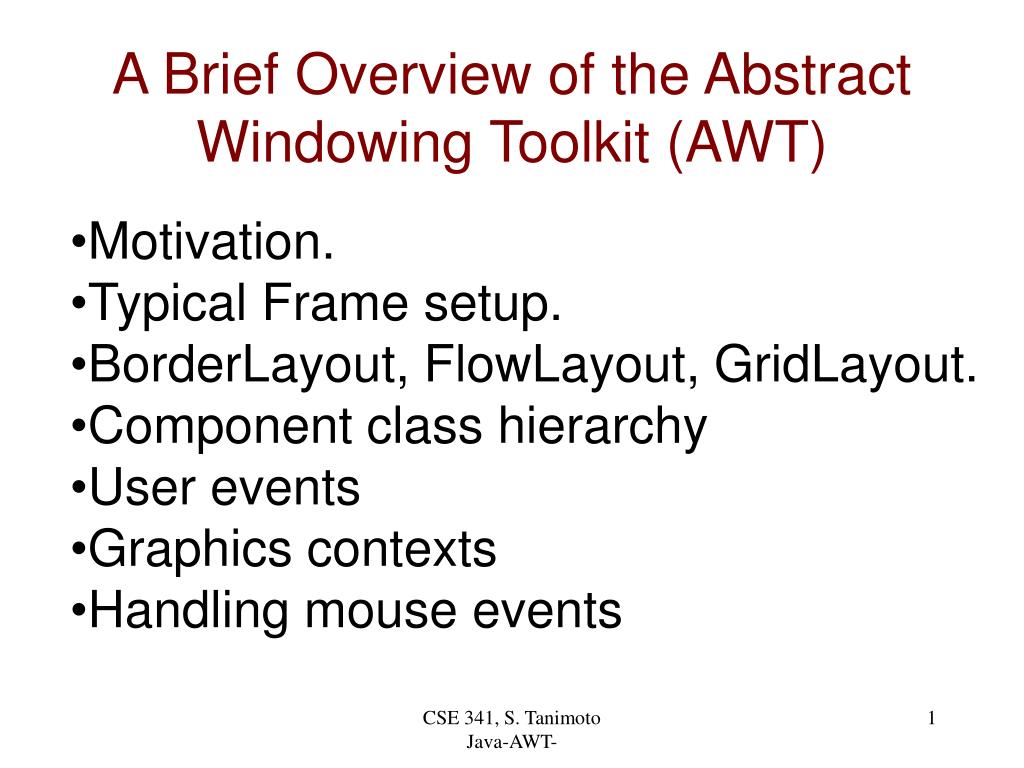
#ABSTRACT WINDOWS TOOLKIT KEYGEN#

Also, remember to show the dialog using the show ( ) method, since the dialog is invisible when created. Since the dialog box is a panel, you can add components and set the layout as you can for any other panel. Dialog boxes can be modal, thereby preventing input to any other window on the screen until the dialog has been completed. Dialog Boxes are similar to window frames, but their use is intended to be short-lived, and are intended to be used as notification of warnings and other important events. Window Class: Provides a generic window with no controls.Panel Class: Provides a generic container.The AWT provides two classes that extend the Container class. The hierarchy and positioning of the GUI elements of a window in Java generally reflect the elements you would find in common graphics applications on OS/2, Windows and Motif. Note that objects that inherit from the Container class may contain other components including Applet. A typical GUI window is composed of several containers within containers. This design allows a container to hold another container. The Component class is the superclass for most of the classes in the AWT.

So an event is the mechanism by which AWT elements communicate with each other. The Java GUI model is event driven, like most GUI windowing systems. Layout managers are described later in this article. To organize these components within a container, the AWT provides the layout manager class interfaces. So, a simple Java window with a push button is composed of a kind of container with a Button component added. The GUI components provided by the AWT include the basic GUI elements such as buttons and checkboxes. Since Java is object oriented, these GUI elements are referred to as GUI objects, but they're more commonly known as GUI controls or GUI components. 1.4 Using AWT in Standalone ApplicationsĪ graphical user interface (GUI) window in Java is designed as a container that holds GUI elements.


 0 kommentar(er)
0 kommentar(er)
